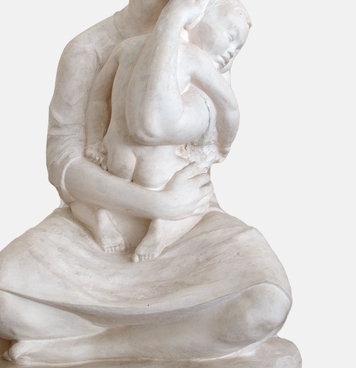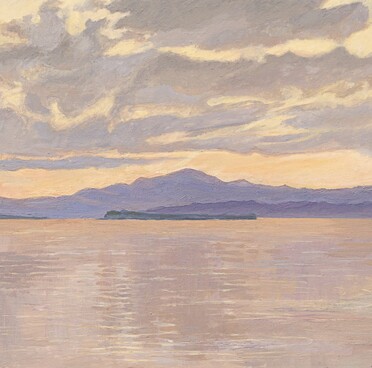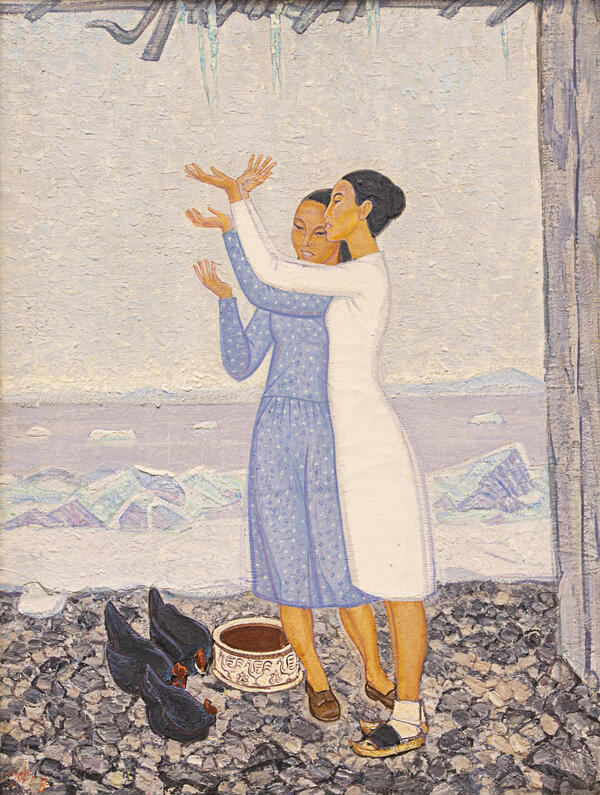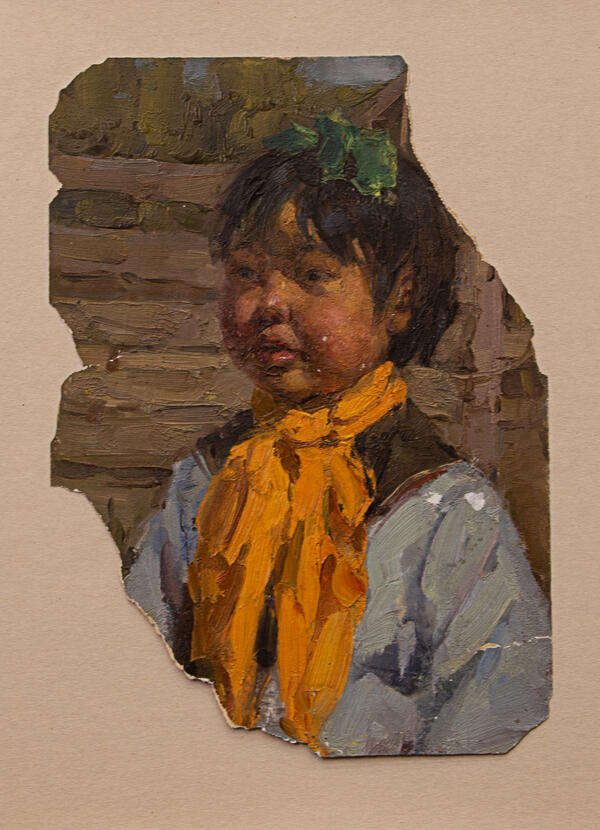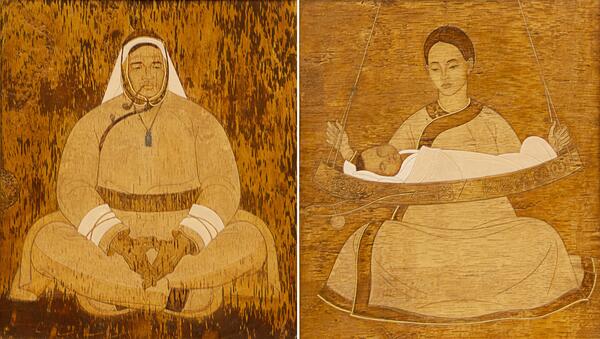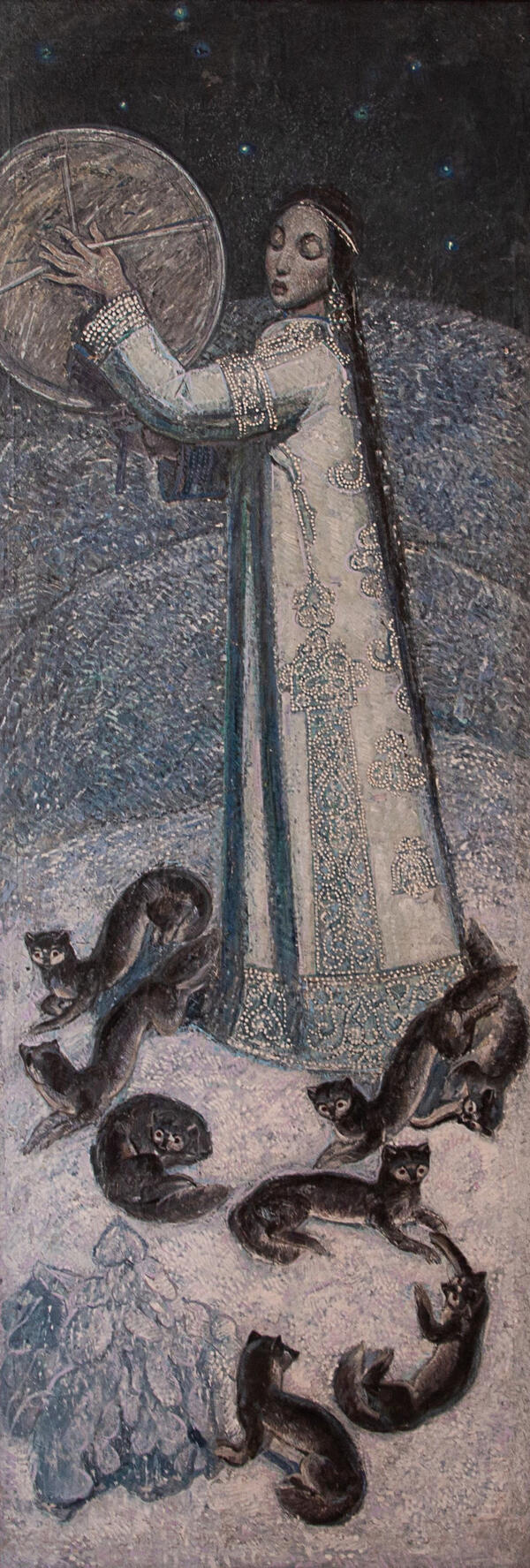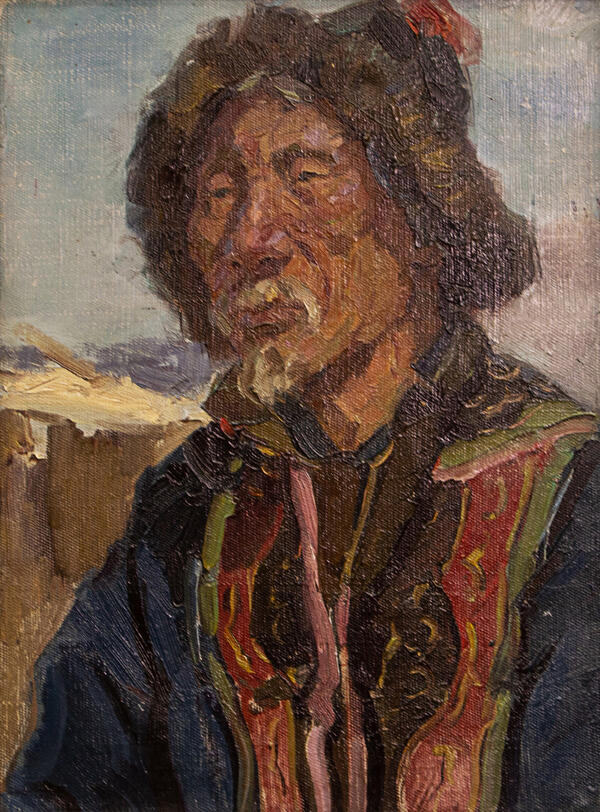Yevgeny Vasilyevich Korolenko remembered that he drew since childhood. His first memory of the beginning of his artistic journey included a funny episode. Once, the boy was punished for something and was left alone in the village hut. Out of pure boredom, he “decorated” the floorboards of the painted floor (which was a luxury for a village home) by carving a drawing of his pet cow with a nail. His grandfather, an icon painter, appreciated the work and asked not to punish the boy but instead provide him with charcoal, pencils and paper.
So, under his grandfather’s guidance, Yevgeny mastered the techniques of drawing, tempera, and oil painting. Driven by the dream of painting, finding his own style and achieving recognition, the young artist arrived in Komsomolsk-on-Amur in the Russian Far East. There, in 1953, he started attending the art school and studio of Georgy Alexandrovich Tsivilyov and was advised to hone his skills through plein air sessions in ethnic villages.
From his very first trip, Yevgeny Korolenko fell in love with the majestic Far Eastern nature, the local people and their culture, traditions, characteristic facial features, and bright clothes. He began creating one work after another.
Between 1954 and 1956, he created a cycle of works called “The Oroch People”, performed predominantly in the glaze painting technique. One of the paintings called “Oroch Children” became Korolenko’s ticket to the Artists’ Union in 1958. The painter is known not only as a talented draftsman and colorist but also as a thorough researcher of local history. He was one of the first artists in the USSR who showed the life of the Amur indigenous peoples from within and in a thoughtful way. It was then that the principle of strict composition was developed, that supported the depicted idea and helped convey the philosophical meaning.
The painting called “Oroch Grandmother Praskovya” is one of the major works of the cycle. An elderly woman smoking a pipe with a long mouthpiece is clearly posing for the artist. She is all dressed up for the session, wearing a festive yellow and orange embroidered robe with trimming; she also has put on many earrings with pendants, bracelets and rings. And yet there is no sign of any tension on her pensive face; she seems to be lost in thought.
The painting “Oroch Grandmother” and some other works are featured in the movie “Nanai Portrait”, dedicated to Yevgeny Korolenko’s art career and shown both on television and movie screens.
So, under his grandfather’s guidance, Yevgeny mastered the techniques of drawing, tempera, and oil painting. Driven by the dream of painting, finding his own style and achieving recognition, the young artist arrived in Komsomolsk-on-Amur in the Russian Far East. There, in 1953, he started attending the art school and studio of Georgy Alexandrovich Tsivilyov and was advised to hone his skills through plein air sessions in ethnic villages.
From his very first trip, Yevgeny Korolenko fell in love with the majestic Far Eastern nature, the local people and their culture, traditions, characteristic facial features, and bright clothes. He began creating one work after another.
Between 1954 and 1956, he created a cycle of works called “The Oroch People”, performed predominantly in the glaze painting technique. One of the paintings called “Oroch Children” became Korolenko’s ticket to the Artists’ Union in 1958. The painter is known not only as a talented draftsman and colorist but also as a thorough researcher of local history. He was one of the first artists in the USSR who showed the life of the Amur indigenous peoples from within and in a thoughtful way. It was then that the principle of strict composition was developed, that supported the depicted idea and helped convey the philosophical meaning.
The painting called “Oroch Grandmother Praskovya” is one of the major works of the cycle. An elderly woman smoking a pipe with a long mouthpiece is clearly posing for the artist. She is all dressed up for the session, wearing a festive yellow and orange embroidered robe with trimming; she also has put on many earrings with pendants, bracelets and rings. And yet there is no sign of any tension on her pensive face; she seems to be lost in thought.
The painting “Oroch Grandmother” and some other works are featured in the movie “Nanai Portrait”, dedicated to Yevgeny Korolenko’s art career and shown both on television and movie screens.

